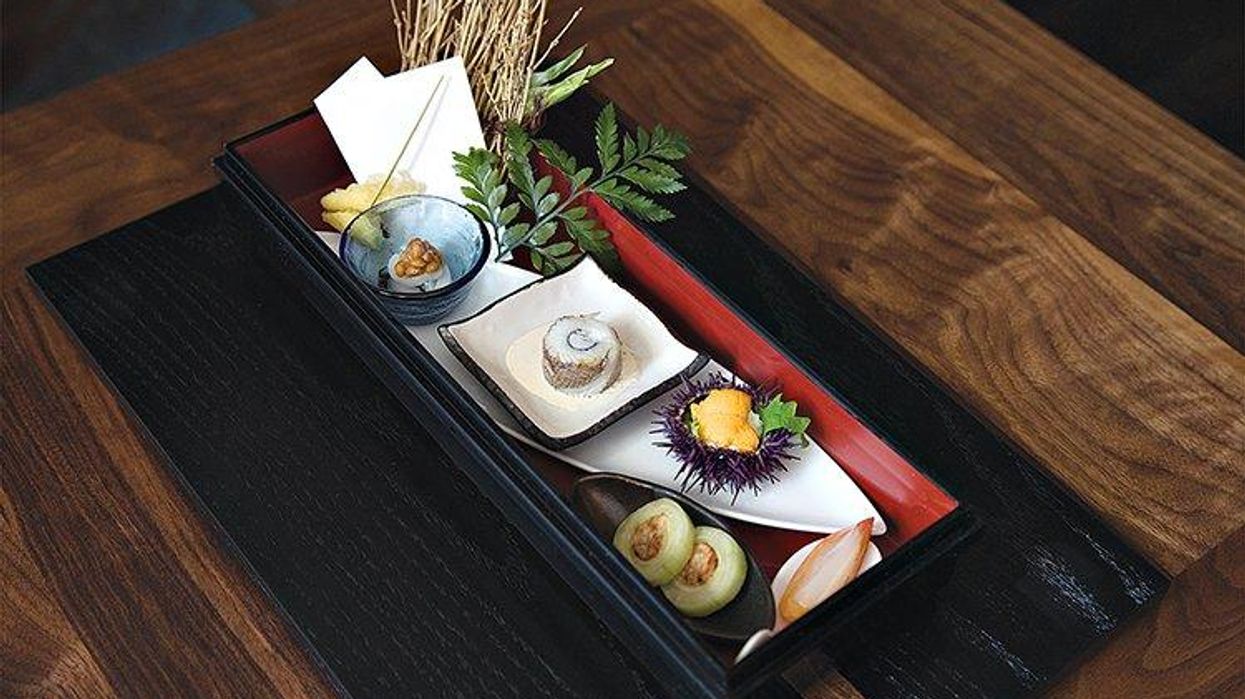Non-topics
Beyond Benihana: The Asian Cuisine You Should Be Eating & Experiencing Now

Four food industry heroes talk taste trends in Asian kitchens, and weigh in on the dishes you should be eating.
June 01 2018 9:37 AM EST
By continuing to use our site, you agree to our Privacy Policy and Terms of Use.

Four food industry heroes talk taste trends in Asian kitchens, and weigh in on the dishes you should be eating.
Can we take a break from “farm-to-table”? Don’t get us wrong, we love the traceability and accountability it has brought to the plate, but we’re more curious about far-flung flavors, and how they’re carving out a significant presence in American dining. Have we finally graduated from the reductive pan-Asian restaurant — or, even worse, Panda Express — to a more nuanced understanding of the broad canon of dishes from other countries?
The menu in a farm-to-table context is a slyly educational tool for clean eating. In the foreign kitchen, it’s a pedagogic tour de force. So we asked some choice chefs and restaurateurs, all of whom work with food from different parts of the Asia-Pacific region, to school us on their ideologies and favorite dishes.
Korean Cuisine
Judy Joo, Jinjuu (London and Hong Kong)
“The West does need some reeducation when it comes to Asian food and flavors, but it’s not their fault. I am also guilty of promoting the ‘greatest hits.’ The best tactic to get someone in the door is to tempt them with something they know, or something that sounds familiar, like bulgogi sliders. But I’ve always felt that the thick hearty soups called jjigae deserve more attention and truly reflect Korea’s culture (think: frigid Olympic ski slopes as seen on TV). We’ve thrown some of these stews on the menu at Jinjuu. Our pork and kimchi hot pot is going well!”
Japanese Cuisine
Niki Nakayama, N/Naka (Los Angeles)
“The first and most important rule in Japanese food is known as sozai wo mamoru: Protect the integrity of the ingredient. And that’s what I love about Japanese cuisine — it emphasizes gratitude towards nature. In my kaiseki (a traditional multicourse dinner) I bend to the ingredient and allow it to shine. Its identity must never be lost. As for recommendations, start by challenging yourself at a sushi bar. Pick an unfamiliar fish.”
Thai Cuisine
Thanaruek Laoraowirodge, Somtum Der (New York)
“A common misunderstanding of Thai cuisine is to think of our food as being from one kingdom, but each region has very distinct flavors. Somtum (spicy papaya salad) is my preferred point of entry into Thai cuisine since it doesn’t fall into the tired noodle or curry categories. You can try your somtum different ways depending on the region, like with tamarind sauce (instead of the popular fish sauce), as they do in Central Thailand.”
Hawaiian Cuisine
Kevin Ching, Port Autonomy and Rau Răm (Yangon, Myanmar)
“New Hawaiian cuisine is redefining fusion — it’s not just a halfway point between the U.S. and Asia. In my restaurants, I’m trying to destigmatize fusion. I don’t mind the poke trend. Poke is actually a good place to start — it’s a simple food that’s changed over time to reflect Hawaii’s Asian immigrant landscape. The authentic versions are stripped-down and usually contain fresh fish, Hawaiian salt, limu(seaweed), and onion. The now-common poke with rice is a twist on the Japanese sashimi and rice bowl, chirashi. But who cares? There’s nothing wrong with taking a healthy preparation of fish and adapting it to our individual diets. I think fusion speaks to the way younger Americans eat now, even over the course of one meal. We can weave together Burmese, Japanese, and Italian, and it still makes sense and is delicious.”